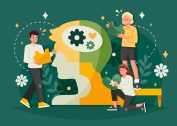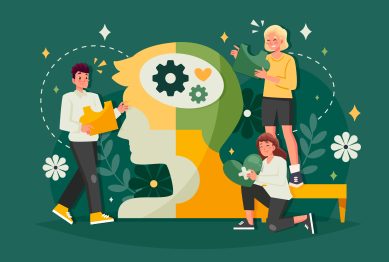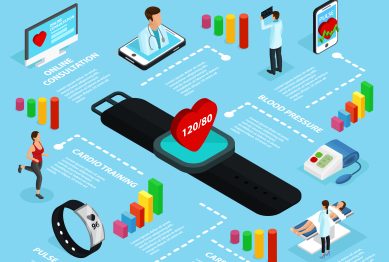Lifestyle choices are no longer just about personal preference—they reflect cultural shifts, technological innovations, and global challenges. In 2025, lifestyle trends that are defining 2025 are shaping how people live, work, and connect. From wellness routines powered by AI to sustainable consumption and digital-first experiences, these trends reveal a world where individuals seek balance, meaning, and innovation in everyday life.
According to Deloitte’s 2024 Global Consumer Report, 76% of consumers say their daily choices are now influenced by sustainability, health, and digital accessibility. Meanwhile, McKinsey highlights that digital adoption and wellness spending have outpaced pre-pandemic levels, making these areas central to modern living. Let’s explore the key lifestyle trends shaping 2025 and what they mean for individuals and businesses.

Why Lifestyle Trends in 2025 Are Different
The defining factor of lifestyle trends in 2025 is integration. People are no longer separating health from technology, work from leisure, or consumption from sustainability. Instead, there is a move toward holistic living, where each decision reflects broader values and long-term goals. This shift is being accelerated by technology, climate awareness, and a growing desire for authenticity in a fast-changing world.
Key Lifestyle Trends That Are Defining 2025
1. Wellness as a Daily Operating System
Wellness has moved beyond gyms and diets. In 2025, wellness is integrated into every aspect of life, from the way people work to the products they buy.
- Smart wearables monitor sleep, stress, and nutrition, offering personalized recommendations.
- Corporate wellness programs focus on mental health as much as physical health.
- Home environments are designed with air purifiers, circadian lighting, and ergonomic furniture to support well-being.
A report by the Global Wellness Institute projects the global wellness economy to surpass 8.5 trillion by 2027, fueled by consumer demand for preventive and holistic health solutions. The trend shows that wellness is no longer a luxury—it is an expectation.
2. Sustainable and Circular Living
Sustainability is no longer just a buzzword—it is a lifestyle commitment. Consumers are increasingly choosing brands that align with their environmental values.
Examples include:
- Buying second-hand or upcycled fashion instead of fast fashion.
- Using refillable containers for personal care and household products.
- Adopting plant-based diets or reducing meat consumption for environmental reasons.
Circular living, where products are designed to be reused, repaired, or recycled, is becoming mainstream. IKEA, for instance, has expanded its furniture buy-back programs globally, allowing customers to resell items for store credit. These practices reflect how sustainability is embedded in daily life, not just in occasional choices.
3. The Rise of Hybrid Living
Hybrid living extends beyond the workplace. In 2025, people are blending digital and physical experiences in shopping, entertainment, and social interactions.
- Retailers are offering “phygital” shopping, where customers try products in-store but finalize purchases online.
- Entertainment is increasingly hybrid, with live concerts streamed in immersive VR for global audiences.
- Education combines online modules with local workshops or meetups.
This trend reflects a desire for flexibility and choice. People want experiences that adapt to their lifestyles rather than being confined to one mode of interaction.
4. AI as a Lifestyle Companion
Artificial intelligence has moved from the workplace to the personal sphere. In 2025, AI is becoming a daily lifestyle assistant.
Practical applications include:
- AI nutritionists creating personalized meal plans based on health data.
- Virtual financial advisors managing budgets and investment goals.
- Smart home systems predicting user preferences for lighting, temperature, and entertainment.
According to PwC, AI-driven consumer applications are expected to add 9 trillion to global GDP by 2030. The adoption reflects not just technological convenience but also a desire for hyper-personalized experiences.
5. Slow Living and Digital Detox
While digital tools dominate life, many people are simultaneously embracing slow living practices to regain balance. This lifestyle trend prioritizes intentionality, mindfulness, and quality over quantity.
Examples include:
- Setting aside device-free hours each day.
- Practicing hobbies like gardening, cooking, or journaling as forms of relaxation.
- Traveling less frequently but opting for longer, more meaningful trips.
This balance reflects the tension between digital convenience and the need for human connection. As more people experience digital fatigue, slow living becomes a counter-trend that defines modern lifestyles.
6. The Growth of Micro-Communities
Large-scale social networks are giving way to smaller, purpose-driven communities. Whether online or offline, people are seeking intimate spaces that align with their values and interests.
- Local co-living and co-working hubs are gaining traction.
- Private digital communities around hobbies, wellness, or professional niches are growing.
- Community-supported agriculture and hyper-local food networks are expanding in cities.
McKinsey’s consumer insights highlight that 67% of Gen Z prefer niche communities over broad platforms. The desire is clear: people want meaningful connection rather than passive scrolling.
7. Conscious Consumption and Minimalism
Minimalism continues to evolve into conscious consumption. Rather than owning more, people are focusing on owning better. This includes choosing high-quality, durable products, reducing clutter, and valuing experiences over material possessions.
Subscription models are being adopted in new areas such as furniture and home appliances, allowing consumers to access what they need without long-term ownership. This trend aligns with financial prudence, sustainability, and lifestyle flexibility.
8. Personalized Travel and Local Experiences
The travel industry is being redefined in 2025. Instead of mass tourism, travelers are prioritizing experiences that feel unique, sustainable, and personal.
- AI-driven travel platforms suggest itineraries tailored to individual preferences.
- Travelers are seeking eco-conscious stays, from solar-powered hotels to off-grid lodges.
- Local immersion, such as participating in community projects or workshops, is growing in popularity.
The World Travel & Tourism Council reports that 70% of global travelers in 2025 prefer brands that demonstrate sustainability and authenticity. Travel is no longer about ticking boxes—it is about creating meaningful memories.
Practical Tips for Embracing Lifestyle Trends in 2025
For individuals seeking to align with the lifestyle trends that are defining 2025, here are practical steps:
- Adopt hybrid wellness routines by integrating digital apps with offline practices like exercise or meditation.
- Prioritize sustainable choices by starting small—choose reusable water bottles, thrifted clothing, or plant-based meals.
- Experiment with AI tools for budgeting, learning, or health management.
- Balance digital convenience with offline rituals to avoid burnout.
- Engage in smaller communities that align with personal values to build stronger connections.
- Choose experiences over possessions to live more intentionally.
- Plan travel with sustainability in mind by supporting local economies and eco-friendly accommodations.
These steps not only align with global trends but also contribute to personal growth and long-term well-being.
Challenges in Adopting Lifestyle Trends
While these trends offer exciting possibilities, they also present challenges. Not everyone has equal access to technology, sustainable products, or personalized experiences, creating a digital and economic divide. Additionally, the emphasis on constant optimization—whether in wellness or productivity—can lead to stress if not managed carefully.
Businesses must also navigate the fine line between personalization and privacy. AI-driven recommendations depend on data, and consumers are increasingly aware of the risks associated with data sharing. Transparency and trust are essential for sustainable adoption.
The Future of Lifestyle in a Connected World
Lifestyle trends in 2025 reflect a world where digital innovation, sustainability, and human-centered values intersect. Looking forward, technologies like augmented reality, blockchain, and next-generation wearables will further shape how people live and connect. At the same time, cultural counter-trends like minimalism and slow living will continue to balance out the digital surge.
Ultimately, these trends are not isolated—they are interconnected. Wellness depends on sustainability, sustainability depends on conscious consumption, and digital innovation depends on human trust. Together, they are shaping a lifestyle that is more intentional, adaptable, and forward-looking.
Conclusion
Lifestyle trends that are defining 2025 highlight a shift toward holistic living where digital innovation, sustainability, wellness, and meaningful connection converge. From AI-driven personalization to circular consumption and micro-communities, these trends are reshaping what it means to live well in a rapidly changing world.
For individuals, embracing these trends means finding balance between digital and offline life, making sustainable choices, and focusing on experiences over possessions. For businesses, it means aligning with consumer values, adopting transparent practices, and creating products and services that enhance both convenience and well-being.
In 2025, lifestyle is no longer just personal preference—it is a reflection of the values, technologies, and global forces that shape our everyday choices.
References
- Gen Z communities—why marketers have, https://www.vml.com
- IKEA Preowned: Everything You Need to Know About the Furniture , https://www.architecturaldigest.com
- The 2025 Global Remote Work Playbook, https://snaphunt.com









